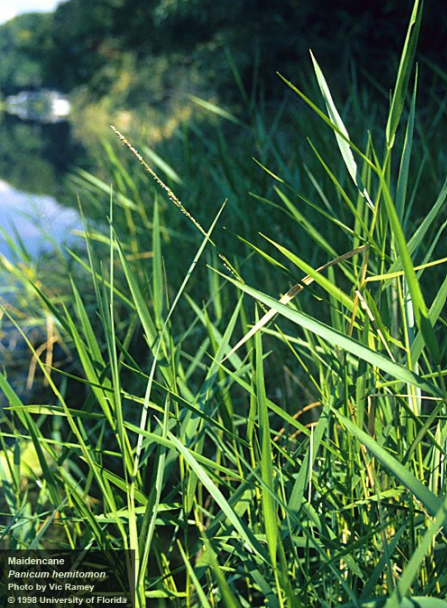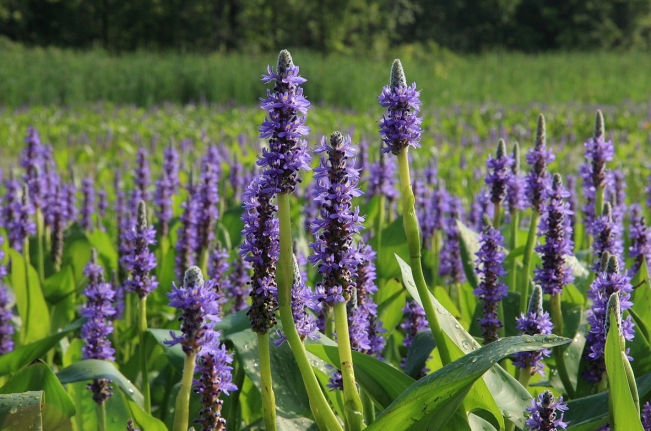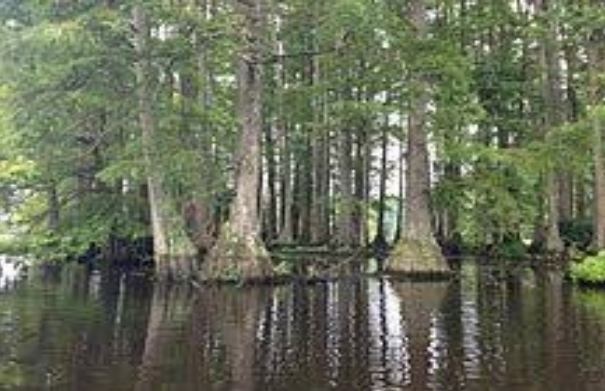November 1, 2017
Plants for the Lakefront
Mary Louise Grable
For some reason many lakefront homeowners have the erroneous concept that the perfect landscape should include a lakeshore comprised entirely of sand. There are numerous attractive plants that benefit wildlife, help control erosion, protect water quality and should be included in the landscape plan.
Shoreline vegetation that is beneficial should not be removed simply to construct a beach. In fact certain trees and endangered plants cannot be removed. Plants that are native to the area greatly reduce or eliminate the need for the use of fertilizers and pesticides. It is okay to remove invasive nonnative vegetation such as torpedo grass, but some of the shoreline needs to be replaced with native plants. There is an excellent website that provides substantial information on restoring the lakefront. Go to Seminole County’s website to find all you need to know about the many aspects of the process.

An emergent plant known as Duck Potato or broadleaf arrowhead has lance shaped leaves and provides showy white flowers with three petals. The flowers appear on stalks that are taller than the leaves. It is a Florida native and grows well at the shoreline or in the water. The tubers are edible and were once a staple for the indigenous people.
Maidencane, a native Florida grass, is excellent for shoreline stabilization. It is a perennial grass growing 2 – 5 feet in height and is found only in freshwater. Although it can get out of control, it is easier to manage and should not be confused with torpedo grass (Panicum repens) which is a nonnative invasive species and almost impossible to control.


Pickerelweed is an attractive Florida native plant found in shallow freshwater and often used as an ornamental plant in water gardens. It is easily recognizable by its beautiful violet blue, uncommonly white, flower spikes which bloom almost the entire year. It is common, extending by rhizomes to the height of 2 – 4 feet. Bees and butterflies are attracted to the flowers, ducks and people eat the seeds and the leaves can be boiled like greens. The plant provides good cover for birds, fish, reptiles, amphibians, insects and
swimming mammals.
It is doubtful that cypress trees were once found on Johns Lake, but currently several lakefront landowners have been successful in growing them. These unique trees dominate the wetlands and are the most tolerant of floods of all Florida trees. The deciduous, often Spanish moss laden conifer has been part of the landscape for thousands of years. It is excellent as wildlife habitat, for flood control and maintaining water quality.
Bald cypress grows mainly in wetlands over many years and may reach over 100 feet.
Its leaves are linear and spread on branchlets. Pond cypress (Taxodium ascendens) does not grow as large and favors depressions in pond and lake margins. Its leaves are awl-shaped and press against branchlets. Some botanists consider them separate species; others as variations of the same species. Both are unique and attractive trees.

In addition to the plants identified in the above article, other commonly found native plants are shown below. There are may species available from some of our local aquascpaing
nurseries. They are all beautiful additions to your lakefront landscape, and you will be amazed at the number of birds, butterflies, fish and mammals that will be visiting your new and Florida Native shoreline!
Fire flag
(Thalia geniculata)
Soft rush
(Juncus effuses)
Swamp lily
(Crinum americanum)
Golden canna
(Canna Flaccida)
Blue flag iris
(Iris Virginica)
Scarlet hibiscus
(Hibuscus coccones)

